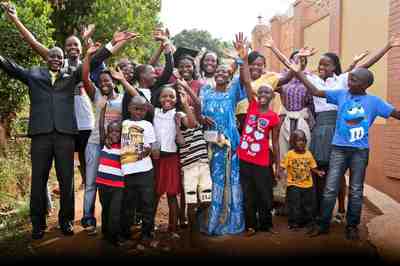This manifesto has been a long time coming. So long, in fact, that it comes in several installments. This is part one.
Back when I first started blogging on The Huffington Post in early 2011, I published "7 Secrets to a More Joyful Existence." It went viral, accumulating more than 1,500 social media shares. This past January, I put up a simple list with beautiful photos by my husband Kiran Ramchandran titled "40 Ways to Find Joy in Your Everyday Life." This post, too, took off, garnering more than 2,500 social media shares and 64 comments.
Coping with personal challenges over the past decade -- through yoga, meditation, reading spiritual books, earning a psychotherapy degree, and other methods -- as well as through life coaching clients, I've learned that while we may swing up, down, and around the curves of life's happiness roller coaster, what we really, truly have access to, no matter what is going on in our lives, is JOY.
We can tap into joy every single day. It is always accessible, even if just for an instant. It is a conscious choice. With even a small amount of effort, we can fill our cloudy skies with a rainbow.

The love of my life and I just returned from a life-changing 16 days in Uganda, where we were creating short documentary films for the grassroots non-profit UgandaProject, which sponsors a small group of young people to go to school. Following that, we spent 48 hours at Burning Man (my 10th, Kiran's first). As a result, I am more charged up than ever with conviction in this:
THE JOY MANIFESTO.
Join me in declaring yourself a champion of joy!
We, the upholders of the Joy Manifesto, promote, practice, and prescribe the following recipe for a more fulfilling and positive existence:
1. We Make Joy a Daily Practice
After a conversation with a Twitter follower, Khary Penebaker, who kept tweeting about the "40 Ways to Find Joy in Your Everyday Life" list, the blog evolved into a #40DaysofJoy program. Khary and Lanita were the first to complete one item off the list every day for 40 consecutive days. But soon after I published a blog about Khary's experience, "40 Days of Joy: A Happiness Practice," Bernadette Xiong, Diane Hardy, Everett Harper, Ryan Sudgen, Angela Arabella, Kate Spencer, Myree Battle, Nancy, and others joined in the fun. It's contagious!
The group consensus? It is entirely possible and, in fact, an uplifting and transformative experience to commit to finding joy in the small moments of your normal life: eating a cupcake with no hands; watching a sunset; cuddling with a pet or playing with a child; taking a walk in the rain; helping someone solve a problem; expressing gratitude; dancing, singing, and listening to uplifting music; being vulnerable in connecting with others; and so on. As Khary Penebaker put it: "I wish I could change the world... But for now, I will work on changing mine, one day of joy at a time."
It's a movement. So let's do it again! Who's in? Just tweet or post with the hashtag #40DaysofJoy. I look forward to following you and sharing your experiences. Let's keep the momentum going, and uplift each other.
2. There is Great Comfort in Community
One of the reasons why the #40DaysofJoy program was so successful is because we had a community of people supporting one another, cheering each other on via social media.
I saw the power of community in effect in a far more somber situation while in Uganda. Shortly before we returned to the U.S., the auntie of a UP-sponsored student passed away. The student invited us to attend his relative's funeral. We were amazed and touched to witness how the entire village came out to mourn the loss of one of their own. The deceased woman's small house and yard were packed with people. They also lined the streets for blocks, and stood all around the gravesite.
Here is something we often miss out on in the modern Western world: a real sense of unity with our fellow humans. In fact, Burning Man works in large part because those who attend form a strong community: one that operates from a place of generosity, acceptance, non-judgment, and celebration (and one that carries on year-round, especially in San Francisco). As you walk around the playa, you find that people everywhere will gift you things, from a necklace to a snow cone, to an experience of a lifetime riding atop a double-decker-bus-turned-pirate-ship.
As proponents of the Joy Manifesto, let's commit to being better neighbors. Let's introduce ourselves to those who live around us, then help organize block parties. We can also nurture communities in our churches, mosques and synagogues, our yoga studios and book clubs, our AA meetings and meditation groups, our parenting classes and local coffee shops. While social media offers an online community, let's make an effort to connect in person and shrink the world just a little.
3. It's Vital to Nurture Our Physical Health
Joy is mostly a psychological practice, which centers on tapping into what we already have rather than focusing on what's lacking. Appreciating the positive aspects of our lives, being optimistic and engaged with activities we're passionate about, helps us to lead healthier, longer lives.
And yet, as a character in my favorite movie The Princess Bride said, "If you haven't got your health, you haven't got anything." Our physical health also impacts our state of mind. Many research studies have revealed that the absolute most effective tactic for combatting anxiety and depression -- even more reliable than pharmaceuticals, in some cases -- is exercise.
In order to optimize joy, it is critical for us to nurture our bodies and treat them as the temples that they are. When we eat nourishing foods and stay physically active, we feel more upbeat, energetic, and alive. So, joy champions, let's get out there and go for a hike or a swim, sign up for a fitness class with a friend, commit to cutting back on sugar and refined carbs, and upping our consumption of dark leafy greens. We can do it together!
4. Gratitude Is the Queen of Joyful Emotions
For the 2.5 weeks we were in Uganda, the UgandaProject volunteers and students joined hands and prayed together before every single meal. One of the students or UP leaders would give thanks for the food we were about to eat, the hands that had prepared it, the blessings of safety and good health that we enjoyed, and the company and love we all shared. Without fail, I wound up with tears in my eyes -- as did many of the others. Kiran and I vowed to continue this simple yet highly disciplined practice of gratitude upon our return to LA.
Scientific research proves that an "attitude of gratitude" is a huge factor contributing to health and happiness. Not only do those who practice gratitude experience more energy, optimism, and social connection, but also they are less likely to be depressed, envious, greedy, or alcoholics. Boom!
Joy champions, you may not feel inclined to pray before every meal, as the UgandaProject students did. Perhaps you prefer to recite your thanks upon waking and at bedtime, or to make a list of what you're grateful for in your journal. It doesn't matter how, but if you make a daily practice of gratitude an unbreakable habit, I guarantee you will feel more joyful.
I look forward to sharing more of The JOY Manifesto with you in the coming weeks!
Photos by: Kiran Ramchandran and Andrea Moore
For more by MeiMei Fox, click here.
For more on happiness, click here.



